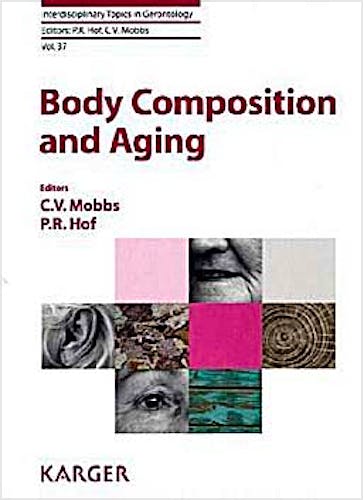

No hay productos en el carrito



Body Composition and Aging (Interdisciplinary Topics in Gerontology, Vol. 37)
Mobbs, C. — Hof, P.
1ª Edición Octubre 2010
Inglés
Tapa dura
198 pags
1000 gr
22 x 28 x 1 cm
ISBN 9783805595216
Editorial KARGER
LIBRO IMPRESO
-5%
161,81 €153,72 €IVA incluido
155,59 €147,81 €IVA no incluido
Recíbelo en un plazo de
2 - 3 semanas
Description
Causes and consequences of increased adiposity and decreased muscle and bone mass
Increased adiposity and decreased muscle mass contribute substantially to age-dependent
disease and disability. In particular age-related increase in adiposity is quickly
becoming a major threat to public health throughout the world. Although the
hypothesis that age-related changes in body composition are due to lifestyle
choices alone is well accepted, it is a vast oversimplification.
This volume reflects the current knowledge in this rapidly developing field
of research. The first part of the book discusses the extent to which increased
adiposity contributes to age-related diseases and longevity. The 'obesity paradox',
describing the protective role of overweight in decreasing mortality while increasing
pathology, is covered in depth. Further chapters address specific aspects of
the regulation of energy balance during aging, including the effects of changes
in food intake. Finally the causes and consequences of loss of muscle mass and
age-related osteoporosis are examined.
A valuable help for physicians treating elderly patients, this book will also
be of great interest to researchers studying energy balance, muscle physiology,
bone disease, and other aspects of aging.
Contents
Title Index Book Series
Non-serial Titles Book News
Contribution of Adipose Tissue to Health Span and Longevity
Huffman, D.M. ; Barzilai, N.
Obesity Paradox during Aging
Chapman, I.M.
Central Control of Food Intake in Aging
Kmiec, Z.
Changes in Food Intake and Its Relationship to Weight Loss during Advanced Age
McDonald, R.B. ; Ruhe, R.C.
Changes in Body Composition in Response to Challenges during Aging in Rats
Wolden-Hanson, T.
New Haystacks Reveal New Needles: Using Caenorhabditis elegans to Identify Novel
Targets for Ameliorating Body Composition Changes during Human Aging
Wolkow, C.A.
Sarcopenia: Prevalence, Mechanisms, and Functional Consequences
Berger, M.J. ; Doherty, T.J.
mTOR Signaling as a Target of Amino Acid Treatment of the Age-Related Sarcopenia
D’Antona, G. ; Nisoli, E.
Mitochondrial Theory of Aging in Human Age-Related Sarcopenia
Parise, G. ; De Lisio, M.
Exercise as a Calorie Restriction Mimetic: Implications for Improving Healthy
Aging and Longevity
Huffman, D.M.
Clinical, Cellular and Molecular Phenotypes of Aging Bone
Syed, F.A. ; Iqbal, J. ; Peng, Y. ; Sun, L. ; Zaidi, M. ;
Further Section
Author Index
Subject Index
© 2026 Axón Librería S.L.
2.149.0